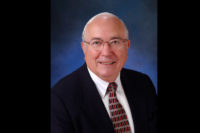Are You Prepared?
By Bob Gatty
The SFA’s 2007 Management Conference offered insight into new opportunities for snack food companies.
Two companies can be equal in just about every way, offering excellent products and outstanding customer service. But one will win. What makes the difference?
More often than not, says management consultant Steve Wiley, the difference is leadership: the ability of executives to prepare their troops for the battle, put them in a position to succeed and respond to opportunities that might arise.
Wiley, founder of The Wiley Group, presented the opening address at the 2007 Management Workshop in Gettysburg, Pa., in late October, drawing an analogy between the success of the northern army in the Civil War’s Battle of Gettysburg and success in business.
“Leadership made the difference in the Civil War, and it is critical to the success of your organization,” he said.
Wiley was one of 13 speakers who covered key topics for the 75 snack food industry sales and marketing and manufacturing and technology professionals who attended the two-day event.
During his speech, he stressed the importance of establishing positive relationships with customers, noting that 86% of sales occur because of those relationships.
“People buy from people,” said Wiley, urging sales execs to forgo standard scripts and be flexible with requirements of process and procedure.
He emphasized the importance of anticipating developments and responding when opportunities present themselves — such as when a competitor stumbles – and encouraged sales execs to, whenever possible, “plant seeds” that some day might result in new business opportunities.
Like the northern army, Wiley said, every successful company must protect the “high ground” — that core quality that provides a point of differentiation. Later, conference attendees suggested those might include a company’s focus on innovation or understanding that consumer concern about health and wellness is growing in importance and then offering products that meet those needs.
“Are you prepared?” Wiley asked his audience.
“I’ve been challenged,” said John Sommers, director of operations at Pretzels, Inc. “These speakers are forcing me to think outside the box. And rubbing shoulders with competitors, vendors and peers, it is pushing us to think and giving us an opportunity to explore ideas. This is an excellent event.”
SFA chairman Tom Dempsey, Utz Quality Foods, agreed.
“This is the best program we’ve had for our middle management people in a long time,” he said. “If you are not sending your people here, you are missing out on an opportunity for personal development.”
Following Wiley’s address, which opened the conference, Jack Newman, regional sales manager at TNA Solutions, said he took three pages of notes.
“I’ve been to a lot of these meetings,” he said. “This is outstanding.”
But the key, said Mike Gilmartin, president, Commercial Creamery Co., is following through.
“I will take my information home and get my team to do something,” he asserted.
Capitalizing on Opportunity
While Wiley challenged his audience to think about their performance as leaders, industry entrepreneur Steven Bernard told the story of how he responded to an opportunity that he recognized and launched Cape Cod Potato Chips.
Cape Cod git its start in an 800-sq.-ft. store front where chips were cooked by hand in a used kettle. The company grew dramatically, outgrowing two larger facilities, and eventually was sold to Anheuser Busch. Bernard then started a sandwich shop.
“My passion is cooking,” he said.
Bernard later bought back Cape Cod, grew it some more, and then sold the company to Lance, Inc. Now, after a brief retirement, he and his daughter, Nicole, own and operate Late July Organic Snacks, a new company they launched after recognizing growing consumer interest in organic foods. They now have plans to take the company national and even international.
Bernard encouraged his peers to pay attention to organics.
“It’s such a viable business,” he told conference attendees. “We think we’re onto something,” he said, adding that organic crackers is a category that is “underutilized.”
Bernard credited the team of people he and Nicole work with today as a major factor in the company’s early success.
“One thing I do know,” he observed, “is the harder I worked, the luckier I got.”
Understanding Retail Trends
Meanwhile, sales and marketing executives were encouraged to pay close attention to the changing face of the supermarket industry, which is responding to consumers’ increasing needs for convenience and their interest in health and wellness, as well as the industry’s concerns about energy and waste management.
Supermarkets across the country are changing their stores to emphasize the “shopping experience” for customers, and snack food companies should consider how they can be part of these new formats and opportunities, according to Paula Payton, Oxford Institute of Retail Management.
“The focus is on the new. It’s all about the new. They want new, new, new,” said Payton, as she outlined new formats and store designs recently implemented or just being implemented by major chains such as Safeway and Kroger and U.K. newcomer Tesco, with its new 10,000 sq. ft. Fresh & Easy Neighborhood Markets.
At the same time, she stressed, supermarkets want consistency to meet shoppers’ needs — having items in stock every day; providing a familiar layout and assortment; having price clarity; implementing effective replenishment systems and processes. All these factors are geared, she said, to meeting the customer’s needs for a convenient, stress-free, satisfying and successful shopping experience.
Health and nutrition, and energy conservation are both important factors guiding supermarkets today that snack food executives must recognize, she pointed out. For example, the Hannaford Bros. chain has implemented a “guiding stars” process to let consumers know the healthy attributes of packaged foods.
“I think we’ll see more of this from other companies,” Payton predicted. “Suppliers with products in these areas will be handed a huge opportunity to develop this.”
The focus on “green” in-store designs affects packaging, she pointed out, noting that the use of LED lighting changes the appearance of packages previously displayed under florescent lights. It’s a widespread movement that will grow, said Payton, adding that Wal-Mart alone projects savings exceeding $90 million annually from its energy and waste reduction efforts.
Payton pointed to new formats such as Pao de Acucar Kids, in Sao Paolo, Brazil, which she described as a “kids supermarket that entertains and educates” children about shopping and creates loyal customers. The store has “kid-sized displays” and “kid-sized checkouts,” and is so popular that thousands of school children have visited on school-sponsored tours.
“Kids who go there become better shoppers,” she said. “There is no reason why Kroger, Safeway or Wal-Mart could have at least a section in their stores designed for kids.”
Payton said Tesco’s Fresh & Easy Neighborhood Markets, launched this summer in Phoenix, Ariz., are expected to grow to more than 300 stores over the next five years. They will offer a wide variety of fresh products, ready packaged products, prepared meals, and everyday essential items that can be bought in a single shopping trip at a fair price, she said.
Recognizing the changes that are taking place at retail, Payton said suppliers “can add value by repositioning their category to better align with shoppers.” Change adjacencies through the use of shopper research and data, she advised, adding that suppliers should make every effort to integrate with private label, which “will be at new levels of quality and innovation.”
“Listen to the shopper,” Payton advised. “Understanding the shopper is marketing’s biggest challenge and weakness.”
Winning suppliers, she said, will be those with “flexible organizations that are able to share information easily across accounts, customers, and functional areas of responsibility.”
Food Security — Be Prepared
In a session for manufacturing and technology professionals, Rod Wheeler, food defense specialist at AIB International, encouraged companies to strengthen virtually every aspect of their security operations to prevent product tampering and potential catastrophes.
“Think like an attacker when you are walking through your facility,” he advised, noting that attacks can result from both outside and inside threats. Thus, he stressed the importance of sound background checks when hiring employees, including temporary and seasonal workers.
Wheeler advised companies to use effective security equipment, including cameras, locks and other electronic devices, where appropriate.
“Use cameras that actually work and provide useful images,” he said. “And nobody should be using dummy cameras.”
Every company should have an evacuation plan in place, Wheeler added, recommending the use of a wind sock or flags to determine the direction of the wind so employees are not sent to a staging area downwind from an explosion or fire.
Establish a Crisis Management Food Defense Team, he further recommended, including a food security crisis documenter, human resources director, an IT representative, the plant or facility manager, line worker representative, switchboard operator, and the chief executive or chief operating officer, among others.
“Develop a documented crisis incident plan,” Wheeler said. “You don’t want to wait until the Katrina of the food industry hits. You need to have a plan in place in advance. It should include processes for handling threats and actual cases of product tampering, and there should be a plan for each facility. All employees should be trained and encouraged to report any sign of possible product tampering or break in food security.” SF&WB



